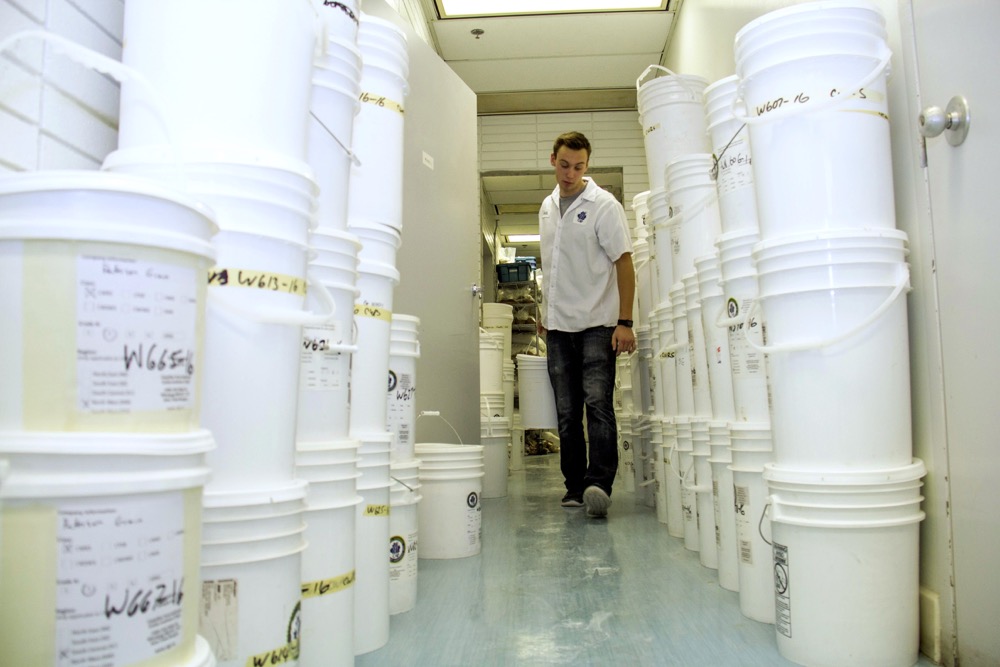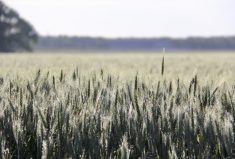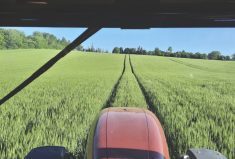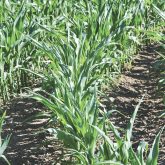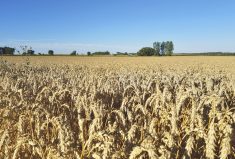This past fall the Canadian International Grains Institute collected grain samples from across Western Canada to complete its annual harvest assessment in preparation for worldwide customer seminars on crop quality.
“It’s important that we get the information out as quickly as possible on what’s coming through the system so customers can see what they’ll be getting and if there is any guidance we can offer on processing,” says Cigi CEO JoAnne Buth. “The crop is being exported as we are talking to them about it, so for customers it’s about seeing what changes in quality they may encounter.”
Read Also

Producers aren’t panicking over tariffs and trade threats
The influence of tariff and trade uncertainity on farm business decisions.
For the third year in a row Cigi is working with Cereals Canada, the Canadian Grain Commission, exporters and producers to meet with Canadian wheat customers. Starting in November, the group began visiting 17 countries in Asia, Latin America, Europe, North Africa and West Africa in addition to meeting with millers in Canada and presenting webinars.
Nine grain companies participated in Cigi’s harvest assessment program this year, submitting samples for milling and end-use quality evaluation, says Lisa Nemeth, Cigi’s director of international markets. “Grain companies have sent in more samples this year, which may be due to an increase in downgrading and the need to assess the lower grades that are available. We have had a very good response. The attention they’ve been giving Cigi’s harvest assessment this year is really positive.”
Samples from the different companies are blended into composite samples according to wheat class which undergo extensive analysis of milling and flour properties that include protein content, gluten strength, starch damage, colour and rheological properties as well as end-use suitability. Composite samples of CWRS are representative of east and west regions, while other wheat classes such as CWAD, CPSR and CWRW are made into prairie composites.
This year, due to significant downgrading, No. 4 and 5 CWAD have been analyzed in addition to the higher CWAD grades, Nemeth says. The grain companies were also asked to submit samples of the new wheat class Canada Northern Hard Red (CNHR) for analysis.
New-crop seminars are important because customers need to understand the quality of the lower grades, she says. “Customers are going to want to see the data and how the wheat works in processing. It’s important to pass that information on and to have technical staff answer questions about the impact of downgrading. This is what new-crop missions are about, how customers transition quality-wise from one crop year to another. And it is even more important for us to be there when there is a shift in quality from the previous year.”
Buth notes that this year the CGC loosened the guidelines for mildew as a downgrading factor after two years of investigation. Cigi milling staff provided advice to the CGC for this change.
“Two years ago we were able to show customers that mildew wasn’t going to affect their end product and there were certain techniques in milling that would alleviate issues,” Buth says. “So the CGC studied it in order to address that. Cigi was working on how to help customers get the best out of the crop but also working with the CGC to make sure the grades that farmers are receiving are fair as far as how they relate to the customer use. These guideline revisions are good news for farmers.”
Buth says that after wheat, flour and semolina analysis, the processing and evaluation of end products such as baked goods, noodles or pasta is a crucial final step in completion of the quality assessment of the harvest for a given crop year. (At press time, the product evaluation for 2016 was not yet complete. For information on the 2016 western Canadian crop go to canadianwheat.ca.)

